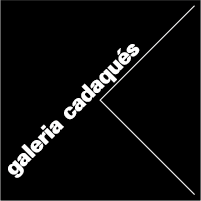
fragments de coses de cada dia (fragments of daily things)
06 – 24.07.2022
In order not to lose the forms
The formula, so simplistic, should make us blush: the difference between an artist and a designer or architect – it is often proclaimed – is that the former, the creator par excellence, would act with total freedom (or subject only to the rules he dictates to himself) while the latter, who usually works on commission and with well-defined objectives, would be a slave to the usefulness and objective results of his work. Nothing could be further from reality. As Romà de la Calle, for example, always reminds us, art, like design, is a human product that develops within a given social and cultural system. In this sense, the art system (like all other systems) is inextricably linked to the others (economic, religious, political, ecological and, of course, moral) in the formation of an ecosystem which is always global for him.
The idea that should occupy us, and which Jordi Vayreda seems to want to update in each of his works, is therefore that of detecting the ecosystem to which his two-dimensional works belong or, as Christopher Alexander stated, what his “pattern language” is. An important clue is given to us by the gallery owner Huc Malla when he claims that “Vayreda is a concrete artist who does not make concrete art”. What we were saying: the old dream of concrete art (defended by Theo van Doersburg, the official father of the creature around 1930) was to sanitise images so that they would not “refer to anything other than themselves”. However, we know that each work of concrete appearance by Vayreda, maintains an umbilical relationship with the three-dimensional project behind it (the Maritim Bar seen as a lift of successive squares and almost Escherian grids would be a good example).
But what if we reverse direction? That is, what would happen if we listen to someone like the architect Peter Zumthor and take the path away from the finished work towards the project, the sketch, the more intuitive graphic design: “Normally, what we have is a model or a drawing (most of the time a model) and it can happen that, in it, a coherence can be appreciated, that many things match; I stare at it and I say to myself: yes, everything fits […] That is to say, I see things as if they were already finished”. No more and no less: the model, the drawing, the project, allow us to “see” things as if they were already “finished” or, what is the same thing, “as if they had already been built”.
Bruno Munari’s lesson remains intact: his “multiples”, like Vayreda’s works, are still intermediate realities that resist the usual cataloguing. Art? Design? Why not both?
Eudald Camps / Art critic
installation views
available works







